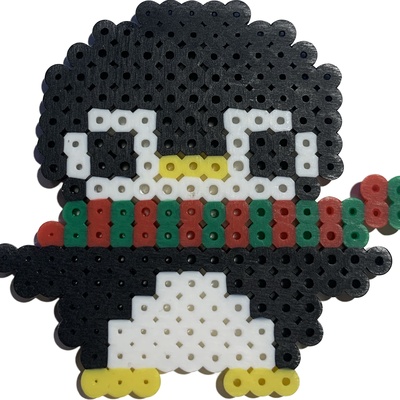I’ve been trying to find a linux programming similar to Rufus to flash images of OSes on a thumb drive.
Nothing from the listicles on the internet or the programs in flatpak have worked for me as well as Rufus on Windows.
What have you used that’s worked well? Or, could I run Rufus on my linux machine with WINE?
One of these should do what you’re looking for. Each has a slightly different approach.
+1 for ventoy. With that you can just flash ventoy on it once, then copy iso’s over to the usb drive without reformatting or reflashing anything.
I’ve had issues with Ventoy on multiple computers with multiple isos. +1 for convenience, -1 for not working 3/4 of the time (for me, I’m sure there are numerous factors).
I could never get Ventoy to work. From Windows ISO’s to several versions of Linux, it never got detected as a bootable drive. YMMV
I like the idea, but it would be great if it was more compatible with different setups.
Your machine is UEFI, which means your usb stick must be formatted in gpt. Ventoy defaults to mbr which means lagacy bios. It is just 3 mouse click setup.
Try again. Because it is the best method. I just updated 2,5 years old Ventoy stick without any issues without re-formatting.
Hey, thanks! I’ll give that a try. I really like the idea of having a one stick to rule them all, so hopefully that works
I’ve found some thumb drives don’t like to boot.
Ventoy has worked for almost everything. Proxmox doesn’t like it.
To be fair, I seem to have a not-so-super superpower to blind pick the USB devices that have the least support for Linux stuff (the aforementioned drives, a WiFi module, etc.).
Hahahaha, sorry to hear (but I empathize). I can be a cheap bastard, so I have some shitty thumb drives around. I figure they eventually die anyway, so this stuff isn’t permanent.
I keep a folder on my server with the tools and noted to rebuild each one. Sometimes I even make an image with the tools, and only leave the ISOs out.
I maintain older hardware at work. We have a platform based on a Biostar motherboard with no USB3 ports, and it will not boot from any USB3 drive I’ve tried. Any USB2 drives work fine. Picky, picky! 🤷
Popsicle from Pop!_OS is also very good - really simple. I’m not sure if it can create a bootable Windows USB though.
https://github.com/pop-os/popsicle
Fedora Media Writer is also another good option.
https://docs.fedoraproject.org/en-US/fedora/latest/preparing-boot-media/
Thanks, I’ll check these out
From this list, only Unetbootin can create Windows installation disk. For this, there is also WoeUSB but it’s CLI only.
Ventoy can do windows installations as well
Ventoy kicks ass for a multi-boot drive. Just drop the ISO on the drive and Ventoy sees it. Slick
Didn’t know about that. Thanks for the clarification!
What?
Rufus just flashes ISOs to disks. On Linux you can doo that with
- udisksctl or dd
- Impression
- Fedora Media Writer
- KDE Iso Image writer
- Balena Etcher
But you are talking about something completely different and Ventoy does that.
Or just cat file.img > /dev/…
I think you should use dd for that?
Why? I am free to use whatever I want. This is not Microsoft Windows.
What
using dd for that is outdated info that everyone keeps blindly parroting with zero understanding why. cat is simpler and works fine.
note: both cat and dd only work for this when the image is made in a compatible way, my linux isos always work fine but a windows iso didnt and needs a more specific tool.
cat is for writing files, dd for writing disks.
Can you explain how this can work?
No, cat is not for writing files. Cat is for reading files and directing the data to standard output.
With “>” you are directing standard output to a file, in this case a blockdevice.
Cool, need to try that
/dev/sdXis a file, and bothdd,catcan read files in full. You can even try something likezstdto compress it too.One of the nice things about
ddthough is you can see the progress with--status=progress
TIL you can do that with udisksctl. How can you do that?
I usually just use dd or Ventoy.
I thought that was what Impression uses but it doesnt tell that anymore. So I dont know
Raspberry pi imager is supposed to be pretty good
Ventoy ftw
Personally I have a USB drive with Ventou and have been using that for a long time.
But before that I just did a
dd. Although I seem to remember someone doing a benchmark and realizing that piping the file was faster. Here’s what I mean by that:In bash you have the echo command which prints text:
echo "Hello"Will print
Hello.In bash you can send the output of a command to a file, so:
echo "Hello" > hello.txtWill write
Helloin thehello.txtfile.In bash you can use the cat command to read files:
cat hello.txtWill print the
Hellowe wrote in that file earlier.In Linux drives are files, so if your USB drive is in
/dev/sdb(DON’T JUST BLINDLY COPY THIS) you can create an image of it like so:cat /dev/sdb > usb.isoBut also the devices are writable, so you can flash an image to a disk by doing it the other way around:
cat image.iso > /dev/sdbdd if=image.img of=/dev/disk/flashdriveis usually all you needif is short for input file if is short for output file
This dd command from the command line is what I use because it is built in and perfectly bare bones for my needs. I like to use the command flag --status=progress to show a status bar while duplicating the data. A word of caution: the dd, or ‘data duplicator’ program is sometimes known as the ‘destroy disk’ program because if you flash the iso file to the wrong disk/drive you can mess up the drive. Use the appropriate level of caution because there is no undo button. You can use the lsblk command to list the block devices on your machine and use the correct device. Quick instructions: use lsblk to list your block devices and locate your flash drive. If the flash drive is mounted (the /sdb/ will have something like /media/files if it is) you can unmount with $umount /path/to/sdb. Once the drive is unmounted you can use the dd program to duplicate the data (iso file) to your drive.
The cursed but arguably better way is
cp image.img /dev/whateveris that more or less cursed than
cat image.img > /dev/whatever?Betterest is pv image.img > /dev/sdx
If you want a GUI, I would use Balena Etcher. You might be able to use raspberri pi imager too.
Ventoy is great as others have said, and probably would do what you want since it has its own installer and is its own bootloader, and can boot isos loaded on the USB drive.
If you want something that works, in my experience, as well as Rufus, maybe take a look at Balena Etcher, too.
They obviously don’t have the features that Rufus has, but I’ve ended up using the default USB image writers that come pre-installed (found them on both Mint and Manjaro, probably available on others). If you’re just looking to write an ISO, check to see if you already have one.
That’s what I ended up going with on Fedora
The principal alternative to Rufus is Balena etchter, but for me it works 1/5 times. But now I’m using Ventoy and… Just use it, it damn fucking good!
ventoy is what has worked best for me
Well, on MX I’m using “MX Live USB Maker” which can flash any ISO on thumb drive, it’s a built-in tool.
Now I’m using Ventoy, you just put multiple ISO on the thumb drive and choose it when you boot the USB drive, it’s wonderful, no more “1 OS per drive”, you just take a 32GB USB drive and you can put 10 distro on it.
Thanks everyone. I tried ventoy but it didn’t work straight away. I do like the idea of having a list of isos to pick from, but it might take more tweaking to get right.
I went with the boot loading tool in Fedora since I just wanted to flash mint to do a reinstall on my kids’ laptop
Balena Etcher is what you want, though AFAIK if you’re making a Windows installer no Linux programs have the convenient options to disable TPM and online account etc that make Rufus so nice.
darn I thought this was about my dream thing which would be a flashed boot loader on a drive where you had a folder you could add iso’s and it would automatically give you a list of isos to boot from.
Something like Ventoy?
oms! this is exactly what I have been looking for.
ooh. imma go google that. thanks.
My honest recommendation is dd It works, it does it’s job, and doesn’t need to many bells and whistles. My only complaint is that there isn’t an easy way to show progress. But as a background command, it works.










